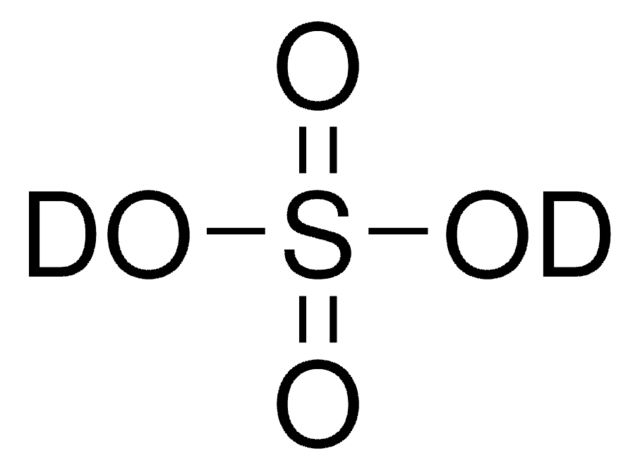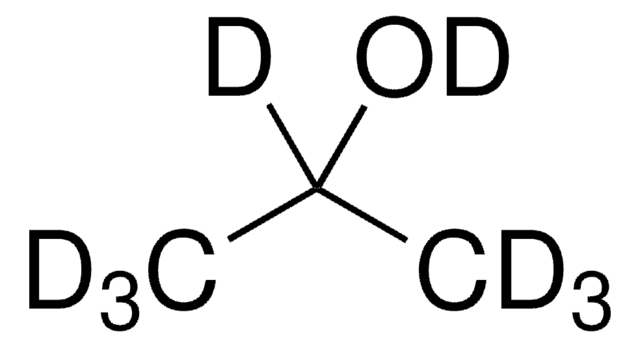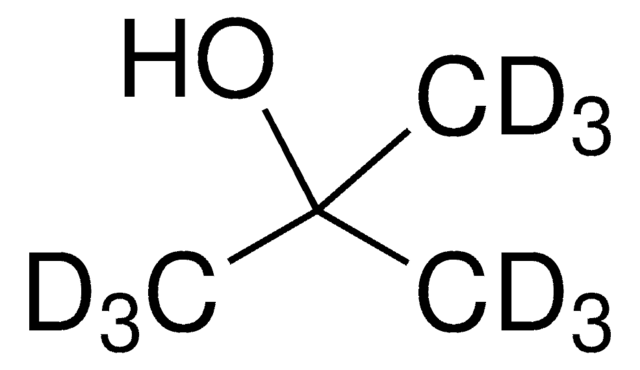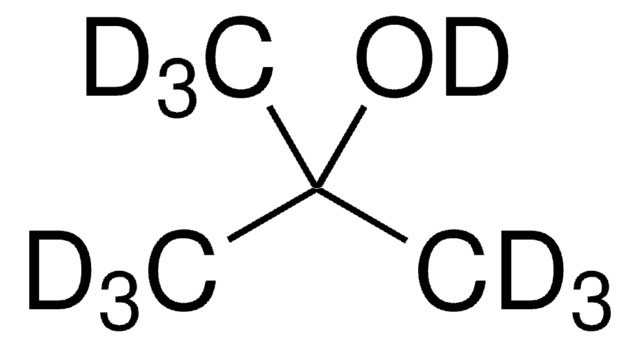175889
tert-Butanol-d10
99 atom % D
Synonym(s):
2-Methyl-2-propanol-d10, tert-Butyl alcohol-d10
About This Item
Recommended Products
isotopic purity
99 atom % D
Assay
99% (CP)
form
liquid
technique(s)
NMR: suitable
impurities
≤0.5% water
water
refractive index
n20/D 1.3835 (lit.)
bp
82 °C (lit.)
density
0.893 g/mL at 25 °C (lit.)
mass shift
M+10
SMILES string
[2H]OC(C([2H])([2H])[2H])(C([2H])([2H])[2H])C([2H])([2H])[2H]
InChI
1S/C4H10O/c1-4(2,3)5/h5H,1-3H3/i1D3,2D3,3D3,5D
InChI key
DKGAVHZHDRPRBM-SGLLWXCUSA-N
Looking for similar products? Visit Product Comparison Guide
General description
Application
Recommended products
Signal Word
Danger
Hazard Statements
Precautionary Statements
Hazard Classifications
Acute Tox. 4 Inhalation - Eye Irrit. 2 - Flam. Liq. 2 - STOT SE 3
Target Organs
Central nervous system, Respiratory system
Storage Class Code
3 - Flammable liquids
WGK
WGK 1
Flash Point(F)
51.8 °F - closed cup
Flash Point(C)
11 °C - closed cup
Regulatory Listings
Regulatory Listings are mainly provided for chemical products. Only limited information can be provided here for non-chemical products. No entry means none of the components are listed. It is the user’s obligation to ensure the safe and legal use of the product.
FSL
Group 4: Flammable liquids
Type 1 petroleums
Hazardous rank II
Water insoluble liquid
ISHL Indicated Name
Substances Subject to be Indicated Names
ISHL Notified Names
Substances Subject to be Notified Names
JAN Code
175889-1G:
175889-VAR:
175889-1G-PW:
175889-5G:
175889-5G-PW:
175889-BULK:
Choose from one of the most recent versions:
Already Own This Product?
Find documentation for the products that you have recently purchased in the Document Library.
Customers Also Viewed
Our team of scientists has experience in all areas of research including Life Science, Material Science, Chemical Synthesis, Chromatography, Analytical and many others.
Contact Technical Service











